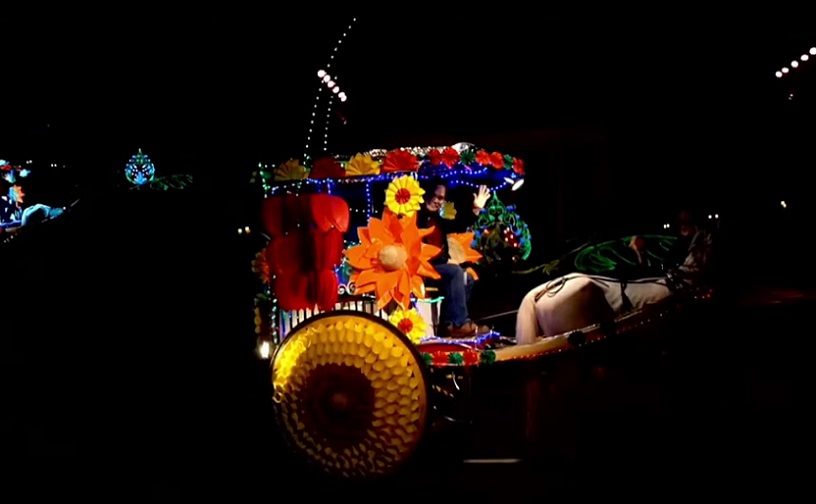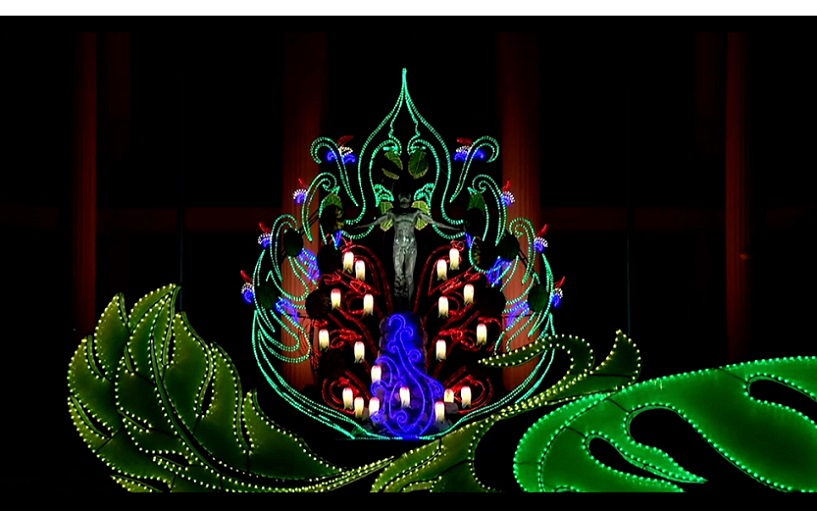Images courtesy of UP Diliman YouTube Channel and Toym Imao

Amidst the third year of the Covid-19 pandemic with memories of lockdowns, deaths, and fear, the country has entered another phase: looser restrictions, greater mobility, and more face-to-face interactions. And yet, challenges never stop: the never-ending rising prices on food, fuel, and almost everything, an eight percent inflation that feels like 800 percent, and the ongoing Russian war in Ukraine that affect all of us.
New challenges
Celebrating the Christmas season, tradition reigns in the lighting ceremony of University of the Philippines Diliman’s Pag-iilaw 2022with its theme of Bagong Tahak, Bagong Galak last December 9. And for the first time in two years, it was an in-person event opened to the public as well as livestreamed on YouTube.
The ceremony marks a breathing space, a respite amidst the challenges and struggles in confronting the ravages of Covid-19 in our lives. It also marks a reset, a renewal of our spirit, commitment, and advocacies in order to face and surmount new challenges in the years to come.

Toym Imao, the master artist of UP’s Christmas installations since 2015, describes his main installation titled Kathakataka, a combination of several words: Kata means tara or let’s go, katha refers to creative output, katakataka is the plant associated with the Oblation, and taka refers to the papier-mâché moulds used in Paete, Laguna known for its woodcarvers.
Overall, this year’s installations have been inspired by the tree of life or luhul in Tausug and the katakataka plant intentionally used by Guillermo Tolentino, the sculptor of the Oblation.
Tree of Life
Toym Imao’s tree of life envelops the Oblation, filled with the flowers of the katakata plant and sunflowers, a nod to the sunflowers blooming along the University Avenue during graduation time. Shades of green, blue, white, and magenta illuminate the tree of life, with the flowers of katakataka flanking the Oblation at its center.
Lanterns in the shape of the flowers of katakataka have been hung along the main roads of the campus.

The tree of life, in Britannica’s definition, is “a widespread archetype common to many religions, mythologies, and folktales.” It symbolizes the source of life and interconnectedness. The local version is the Tausug luhul, a traditional tapestry or canopy used to adorn the ceiling a house in festive occasions.
It uses the ukkil design predominantly used by Muslim groups in southern Philippines that consists of stylized scrolls of plant, leaves, and vines with multiple roots and branches.
The Oblation and Katakataka
An enduring symbol of the University of the Philippines, the Oblation is a statue made by Guillermo E. Tolentino (1890-1976), a UP professor who received the National Artist for Sculpture award in 1973.
Commissioned in 1935 by UP President Rafael Palma, the concept of the Oblation is based on the second stanza of Jose Rizal’s Mi Ultimo Adios. A statue of a naked male figure with arms stretched upwards, the Oblation symbolizes openness, truth, and freedom. It measures 3.5 meters in height, representing the more than 300 years of Spanish rule in the country.

Known as miracle plant, katakataka is a succulent herb with cylindrical and pendulous flowers, and many uses in traditional folk medicine. Tolentino added this plant entwined around the feet of the Oblation, to denote the resiliency of students, and described the plant as follows:
Katakataka is really a wonder plant. It is called siempre vivo (always alive) in Spanish. A leaf or a piece of it thrown anywhere will sprout into a young plant. Hence, it symbolizes the deep-rooted patriotism in the heart of our heroes. Such patriotism continually and forever grows anywhere in the Philippines.
Toym Imao
A visual artist and a faculty member of the UP fine arts college, Abdulmari Jr. De Leon Imao is well known for his public art installations. Some recent ones include Barikada (February 2021), an art installation in front of the Oblation in UP Diliman, using bamboos, old classroom furniture, and upcycled materials in commemoration of the 50th anniversary of the Diliman Commune of February 1971. Whispering Flower Beds (March 2021) consist of old and broken hospital beds turned into garden beds filled with plants at the Philippine General Hospital, Manila, as a tribute to the frontliners (the doctors, nurses, and the hospital support staff) of the country who all worked tirelessly in the fight against Covid-19. And yet, they remain unpaid and neglected to this day by the power that be. In memory of all the lives lost in five decades of state-sponsored killings, Remains to be Seen (November 2022) commemorates the 50th year of the declaration of martial law (PD 1081) by then President Ferdinand E. Marcos. It uses 50 actual body bags laid along the Oblation Plaza and the University Avenue of UP Diliman, filled with garden soil, and planted with flowering plants such as “touch me not” (makahiya), “forget me not,” and the katakataka plant.


